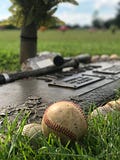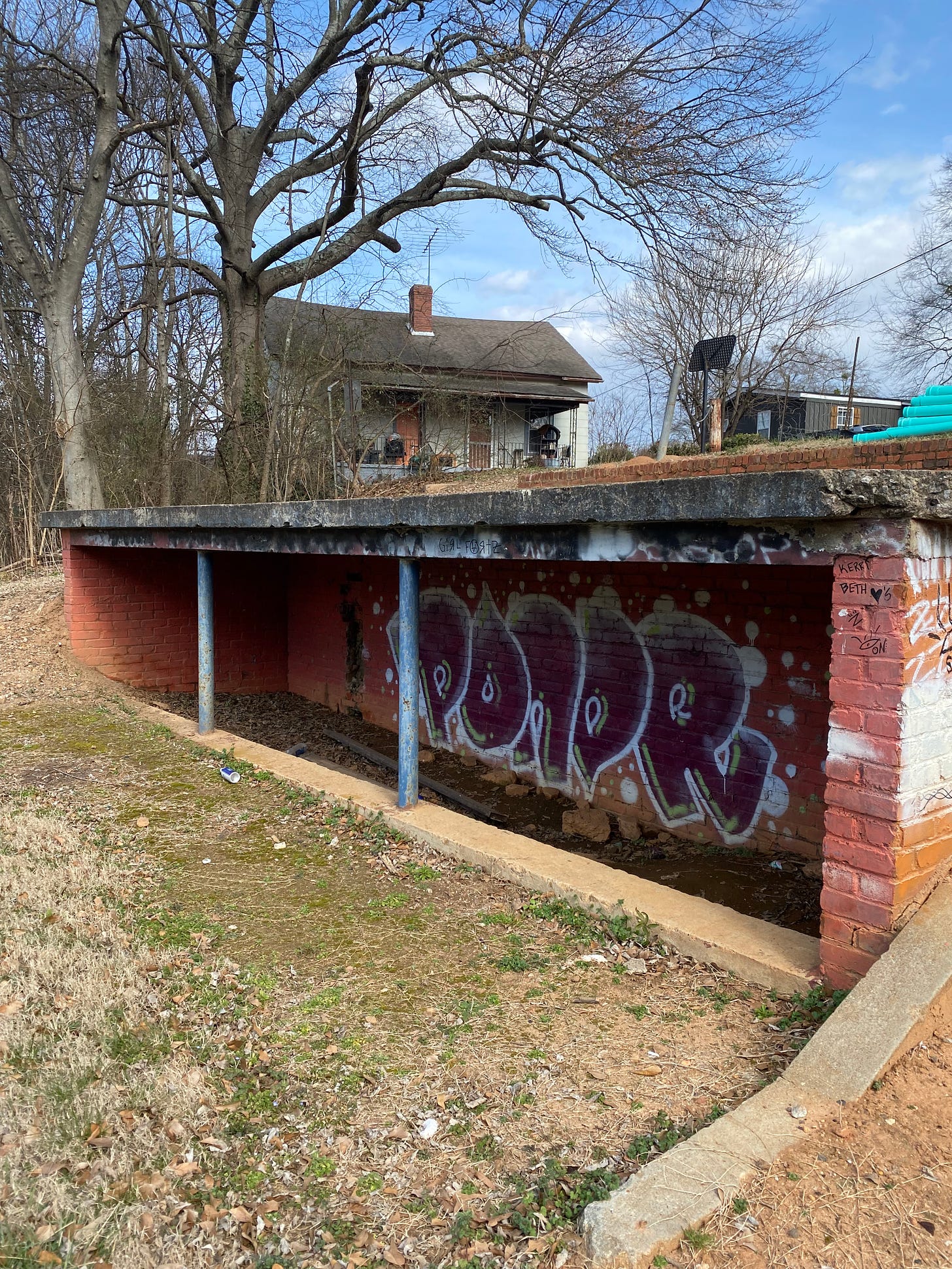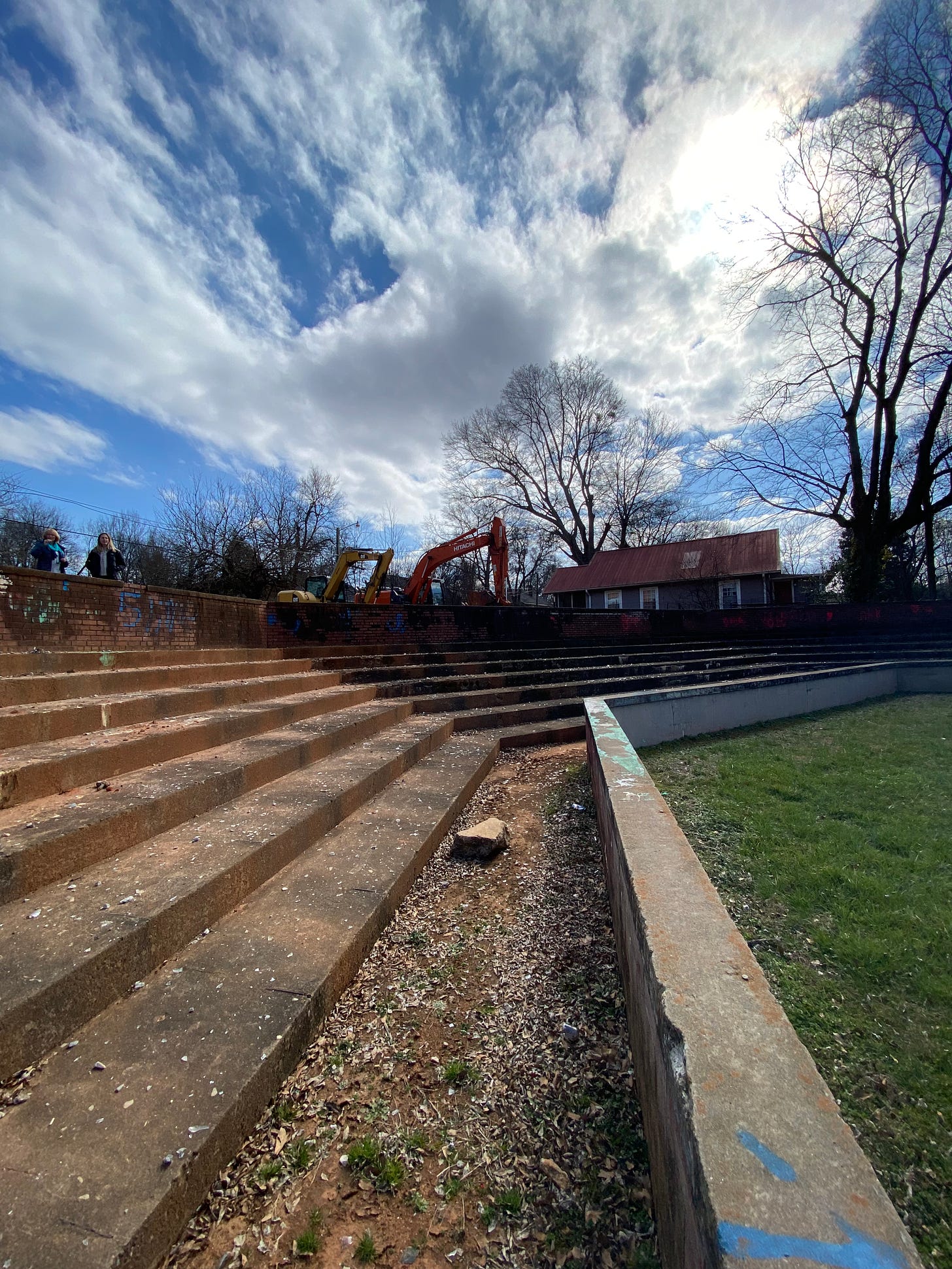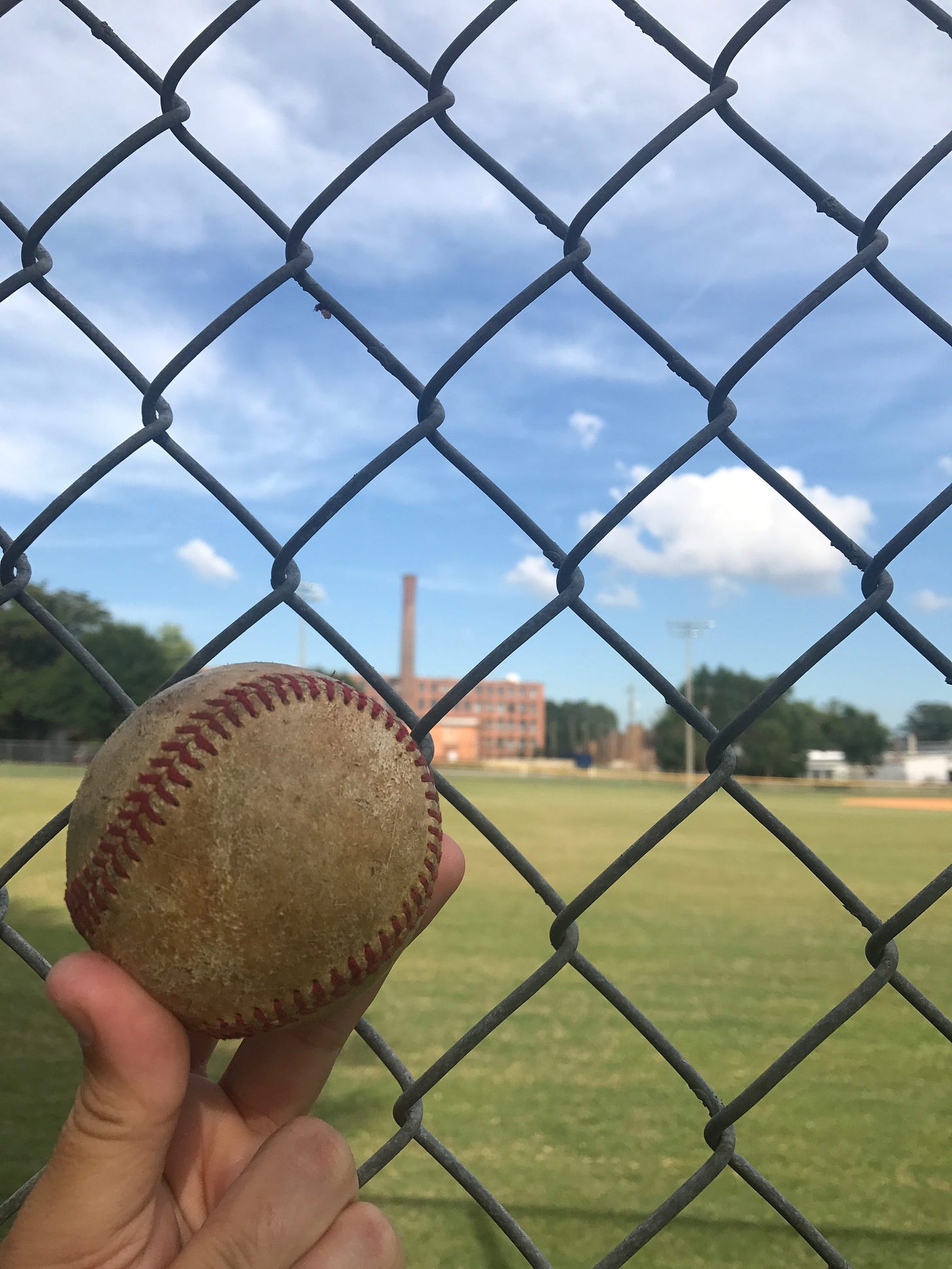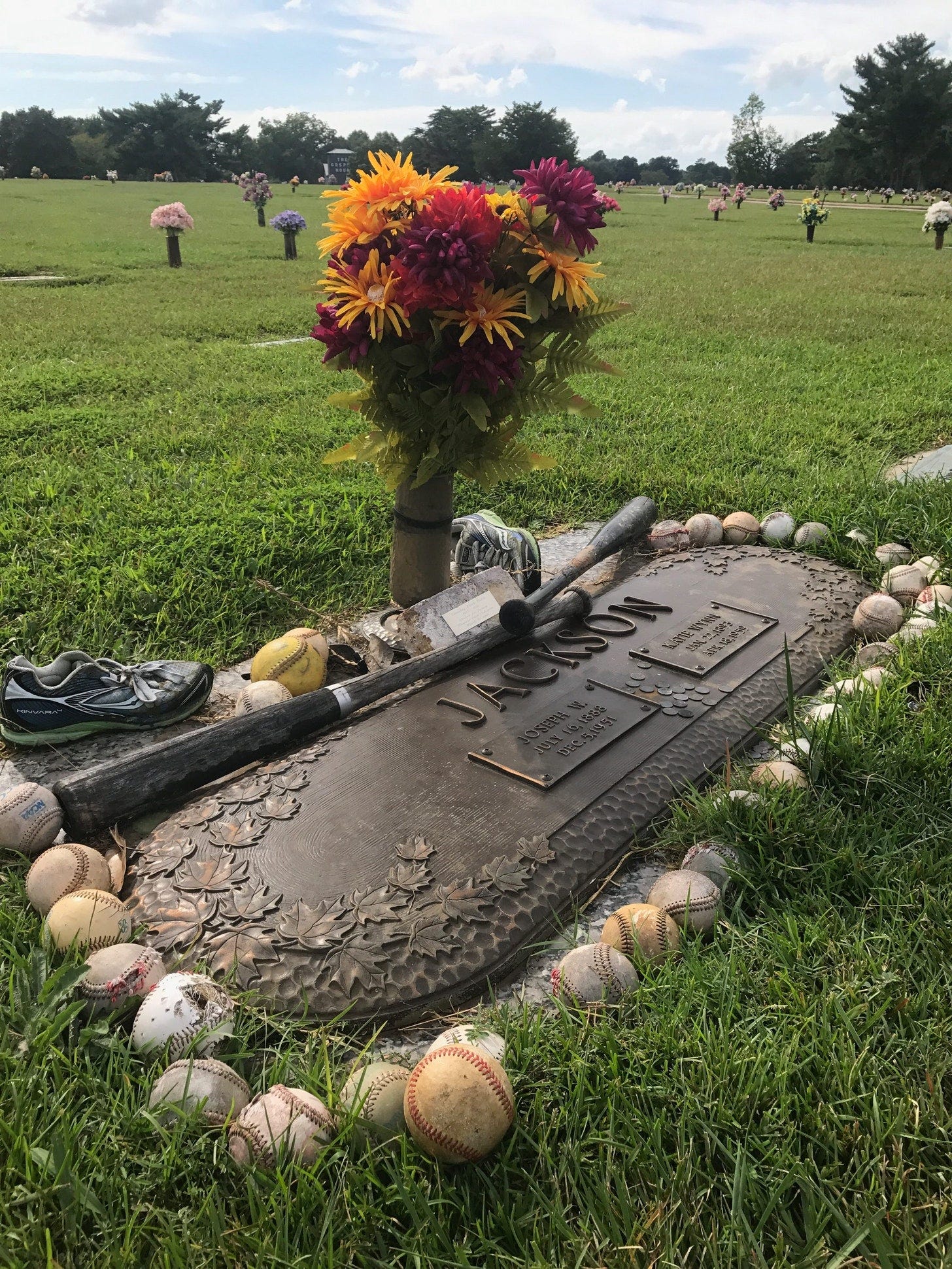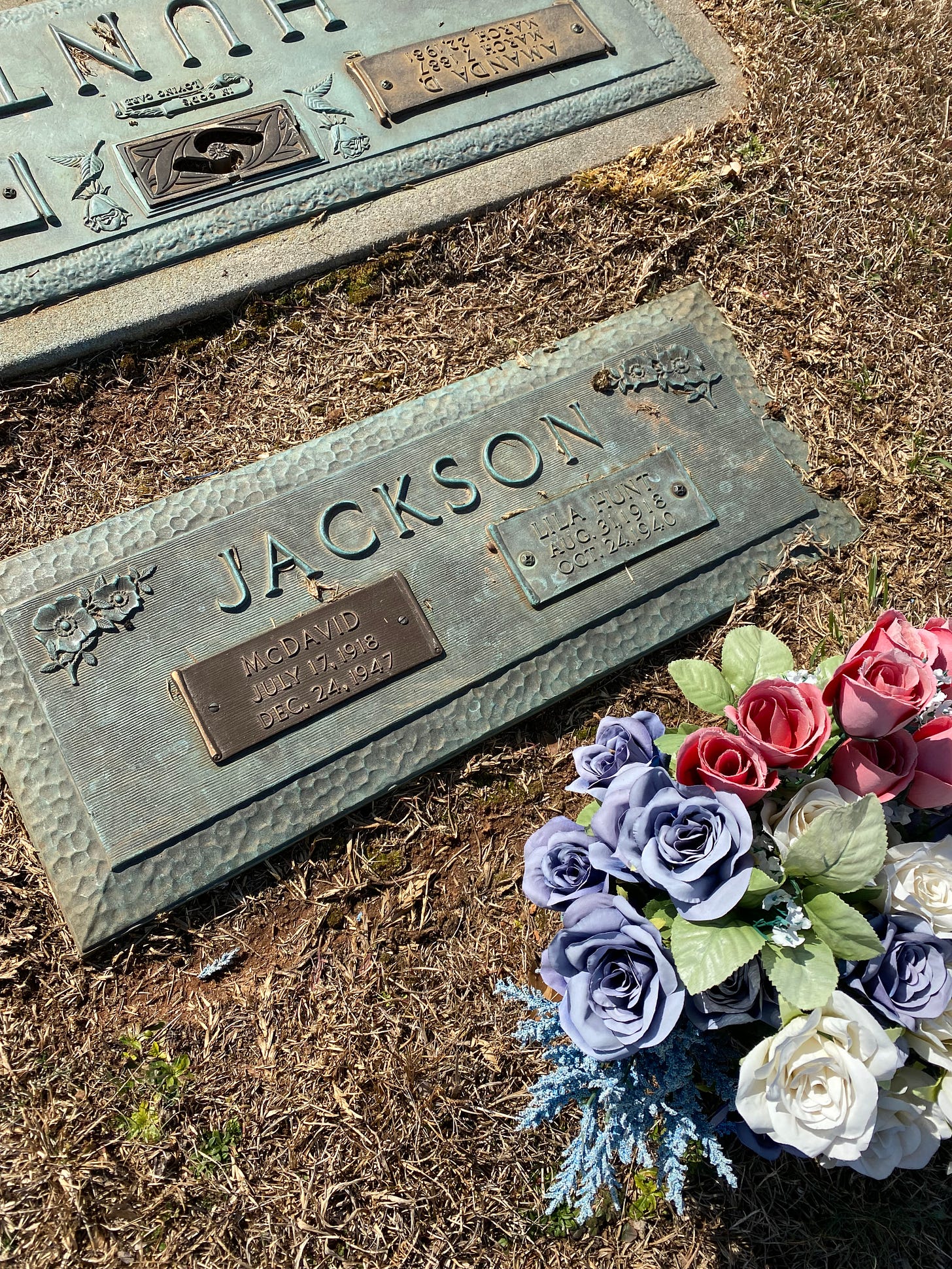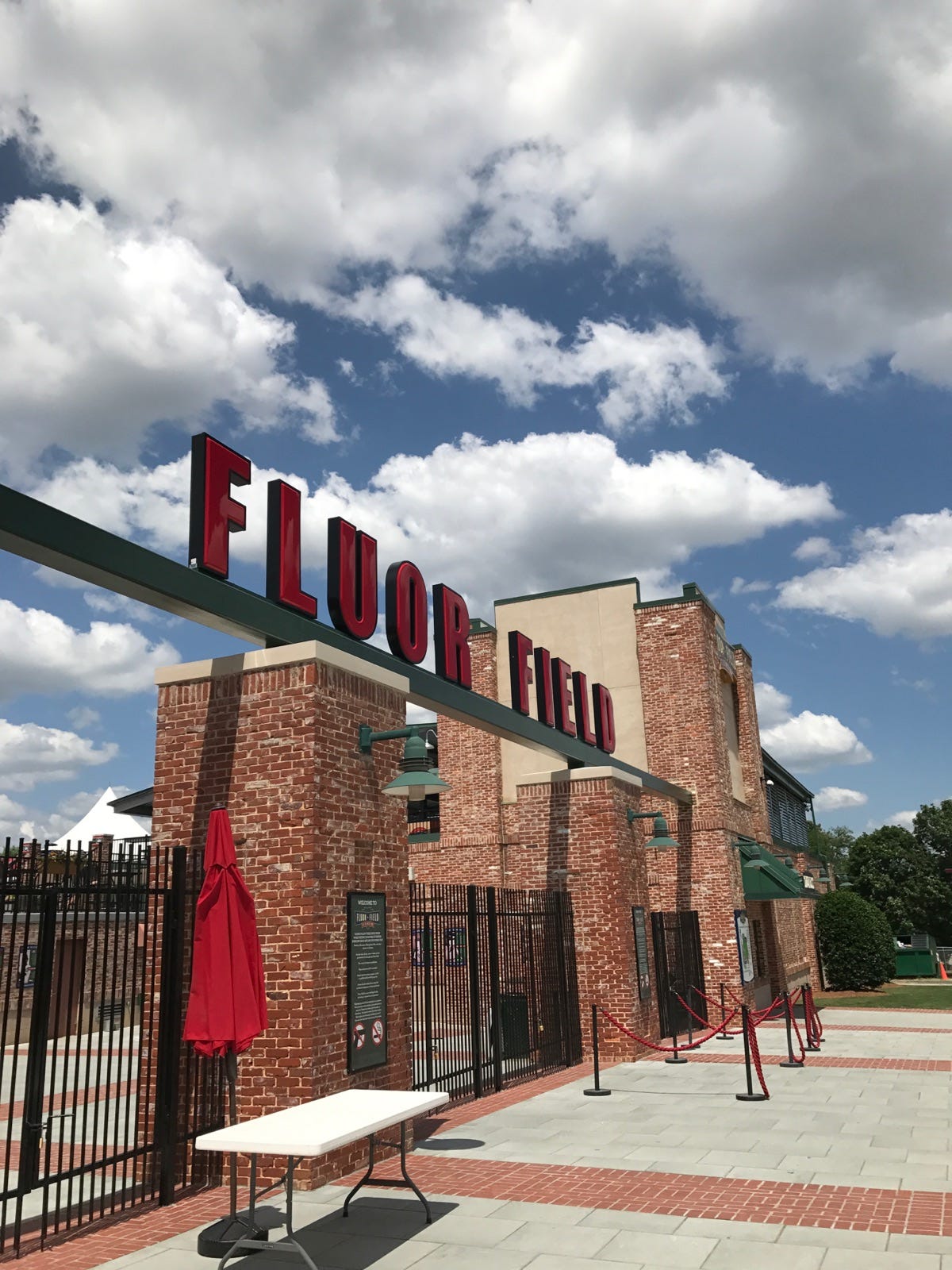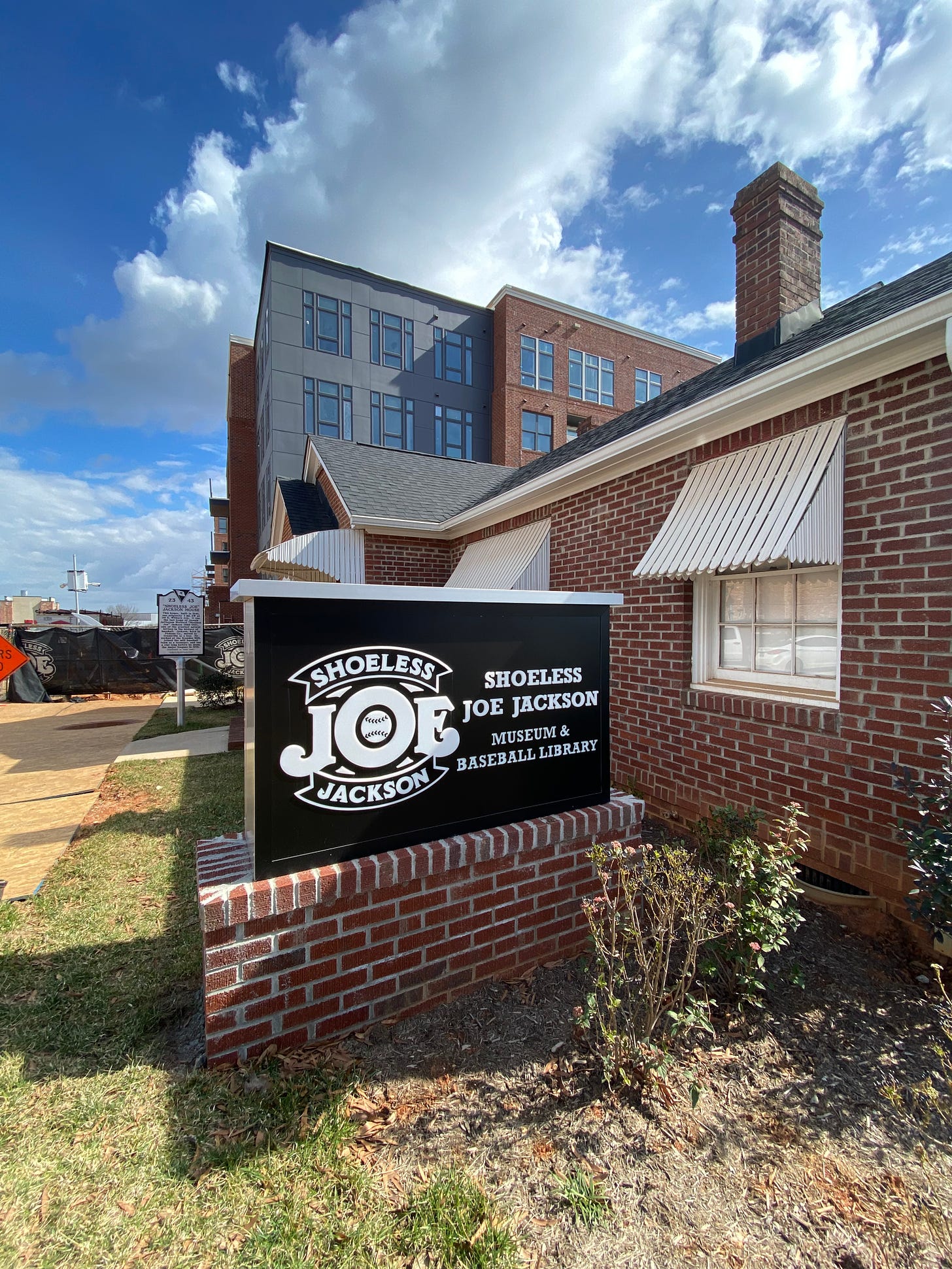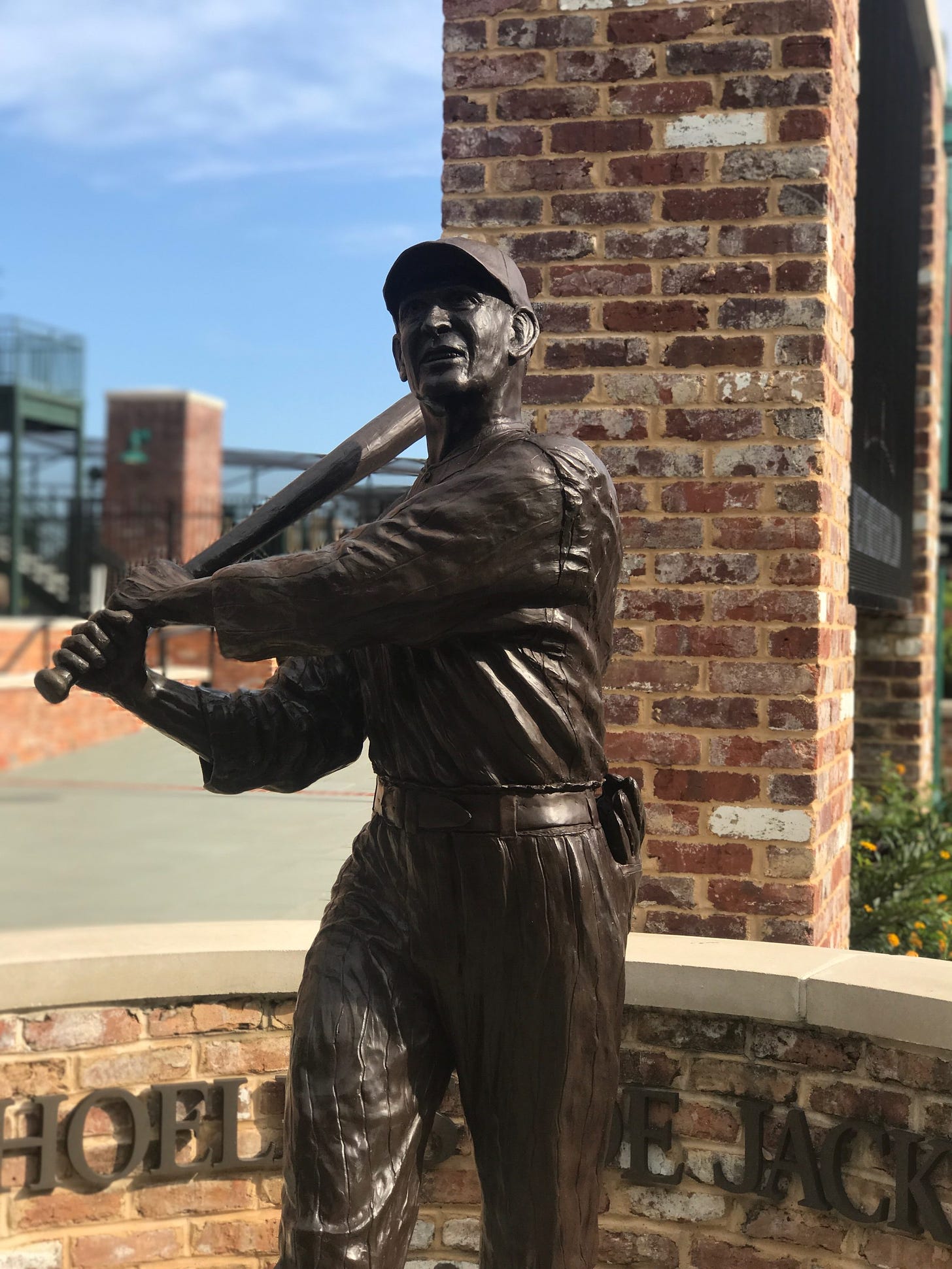I realize some of you may not be baseball fans, but if you’re a fan of Greenville, (and I know all of you are), this is a story you need to read. I had no idea how much of a legend Shoeless Joe Jackson was until I began my research. It amazes me that he lived RIGHT HERE in our town!
To understand the rise and fall of the infamous Shoeless Joe Jackson, I need to introduce you to Greenville in the early 1900s. Before textile mills went the way of the manual typewriter, Greenville was known as the Textile Center of the World. Neighborhoods were built around mills. Churches, schools, stores, doctors offices, dentist offices and the workplace were all a part of these tight knit communities. Brandon Mill Village is where Joseph Jefferson Wofford Jackson (try saying that five times fast) fell in love with baseball.
He began working in the mill at age six and never learned to read or write. Whenever he could, Joe would sneak out into the sunshine to play baseball, a.k.a. cow pasture ball (you’re welcome for that picture!) Mill owners encouraged family events for their employees and baseball played an important role in the communities. Every mill had its own baseball field. If you look really hard, you can still see remnants of glory days gone by.
At the age of thirteen, Joe began to play on Brandon Mill’s Men’s baseball team. His skills on the field were better than the adults in the league. Jackson was a multi-talented player. His fans began calling his glove “the place where triples die.” Joe’s home runs, inside and outside the park, were called “Saturday Specials.” His line drives were called “Blue Darters.” Blue flames were said to shoot out from the ball on impact.
Joe’s siblings carried hats through the stands to collect tips from fans. He sometimes brought home more money than his dad, a top paid employee at the mill.
Jackson’s professional career began in 1908 in Philadelphia. The nickname, Shoeless Joe, came that same year when new shoes caused blisters on his feet. With only twelve names on the roster, sitting out wasn’t an option. Joe played four innings in his socks.
After being traded to the Cleveland Indians, Jackson hit .408 in his first full season in 1911. His .356 lifetime average helped him earn the title, “the greatest natural hitter who ever lived.” Let that sink in… the “greatest natural hitter who ever lived,” right here in Greenville. That is HUGE!
The Chicago White Sox picked up Shoeless Joe in 1915. He batted .307 in the 1917 World Series the Sox won against the New York Giants. Things went downhill fast just weeks before the 1919 World Series against the Cincinnati Reds. Jackson became tangled up in a game fixing conspiracy. In that series, Joe hit .375, setting a World Series record, and played an errorless outfield.
Chicago lost to the Reds and Jackson was suspended from the team. He was later acquitted of any charges of conspiracy, but that ended Shoeless Joe’s professional career. (Insert all the tears here).
Obviously, there is a lot more we could learn about Jackson’s time in town, but I don’t want to keep you too long. Let’s fast forward a bit…
Joe Jackson died of a heart attack on December 5, 1951. Neighbors questioned whether it was really Joe’s time to go. In those days, families had telephones, but shared lines with two to three other houses - called party lines. Joe’s wife, Katie, didn’t always want to wait her turn to use the phone. She would tell neighbors there was an emergency so they would end their call. On December 5, when Joe was having a heart attack (not his first), Katie picked up the phone to call for help only to find a neighbor deep in conversation. When Katie told her she needed to use the phone, the neighbor refused to hang up, assuming Katie was “crying wolf” again. Joe died that day. The neighbor was ostracized by the entire neighborhood.
A wake was held at the home. They knocked out a window to accommodate the casket. Local flower shops closed because they sold out of flowers.
Shoeless Joe is buried in Woodlawn Memorial Park on Wade Hampton Blvd. Visitors to the cemetery can easily spot Jackson’s grave. It’s the one surrounded by all the baseball paraphernalia. If you decide to swing by, carry an old baseball or quarter to leave behind.
McDavid Jackson was the son of Joe’s brother, Dave. Dave and his wife, Ruth, had three children. Ruth died of pneumonia during the 1918 flu epidemic. At the young age of twenty-five, Dave and his three small children moved in with his mother. After being banned from baseball, Joe and Katie moved to Savannah. It is believed that they took the youngest nephew, McDavid, with them. Years later, when the family moved back to Greenville, McDavid met his wife Lila Mae. Her first pregnancy was traumatic and the baby didn’t survive. During the early hours of the next morning, Lila Mae died. McDavid later married his second wife, Gladys Mae. Their only child was born two months pre-mature and lived eleven days. Years of trauma caught up with him on December 24, 1947. McDavid killed himself with a gunshot to the head. He was twenty-nine years old.
You can find McDavid’s burial plot right above Joe’s in Woodlawn Park. (A shared marker with Lila).
When visiting Fluor Field, you can’t miss the statue of Shoeless Joe that greets you at the front gate. To pay tribute to Greenville’s baseball heritage, repurposed bricks from area textile mills were part of construction.
Shoeless Joe Jackson Memorial Park is located on West Avenue in the Brandon Mill community. The eight acre lighted baseball complex, complete with playground and covered shelter, celebrates Greenville’s rich baseball history.
The museum/baseball library is the actual house Joe and Katie built in 1940.
Fun Fact: Woodfield Development is building a luxury apartment complex, across from the field, to be named .408 Jackson to commemorate Shoeless Joe’s 1911 season batting average. The all time record for highest batting average for a rookie still stands today.
Last week, I had the privilege of participating in a “staycation” media trip with VisitGreenville. The museum tour was part of our morning spent behind-the-scenes of the city. Preston and I had been, but that was before Executive Director Dan Wallach entered the game. Wallach was kind enough to carry us to several of Joe’s frequented spots, while narrating our journey.
With baseball season right around the corner, I’m excited for you guys to visit the museum. Check out their website for hours of operation.
Dan’s passion is contagious. Greenville definitely hit a home run when they hired him!
Every town needs a Hero and I’m thankful Shoeless Joe belongs to us!

